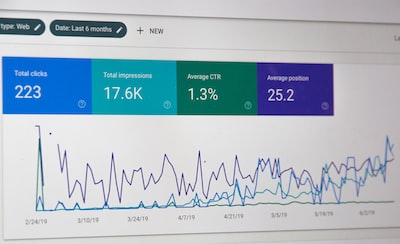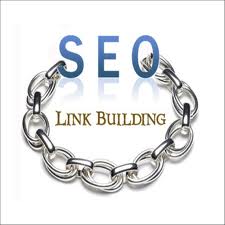In the complex world of search engine optimization (SEO), link-building has always been a crucial strategy for website owners. However, not all links are created equal, and some links can actually be detrimental to a site’s rankings on search engines. This is where the Google Disavow Tool comes in. If you’re facing issues with harmful links, one of the most effective actions you can take is to add those links to a disavow list. In this blog, we will explore the importance of expert help when it comes to disavowing links, including the use of a properly formatted disavow list, and how it can make a significant difference in the success of your SEO efforts.
Understanding the Google Disavow Tool
Before we delve into the importance of expert help, let’s first understand what the Google Disavow Tool is. Introduced by Google in 2012, the Disavow Tool allows website owners to disavow or disassociate themselves from certain links that they believe are spammy, low-quality, or potentially harmful to their site’s rankings. By creating a disavow list and submitting it through the Google Search Console, website owners can communicate to Google which links they want to be ignored or devalued when determining search engine rankings. This process helps maintain a clean backlink profile, ultimately contributing to a more effective SEO strategy while using the well-known algorithm known as PageRank.

The Core Purpose of the Disavow Tool
The core purpose of the Google Disavow Tool is to assist website owners in addressing negative SEO attacks and maintaining a clean backlink profile. Negative SEO attacks involve intentionally building spammy or harmful links to a website with the intent of sabotaging its search rankings. When managing your backlink profile, a disavow list can be crucial in identifying and removing unwanted or toxic backlinks. The disavow tool allows site owners to cancel disavowals, enabling good backlinks to be recognized by search engines.
By disavowing toxic links, website owners safeguard their site’s search results and prevent potential manual actions from search engines. The disavow tool page provides website owners with the ability to disavow new links that they deem spammy, allowing them to maintain a high-quality backlink profile that aligns with search engines’ guidelines. Additionally, the disavow tool also allows for disavowing on the URL level, ensuring that all toxic links are removed and not just those on the domain level. This can be especially helpful in cases where a link may exist on multiple pages, such as http://www.example.com/home and http://www.example.com/home.html. To streamline this process, adding these problematic URLs to a disavow list ensures that search engines disregard them, ultimately contributing to the site’s ongoing SEO health.
The Right Time to Utilize the Disavow Tool
Knowing when to utilize the disavow tool is crucial for website owners. There are several instances where utilizing the disavow tool becomes necessary, such as when conducting a backlink audit using a backlink audit tool and discovering spammy links. These links can negatively impact a site’s rankings on search engines, and adding them to the disavow list can help mitigate the negative effects. Disavowing harmful backlinks through the disavow tool ensures that search engines ignore those links, improving the overall health of the website.
If a website has received a manual action from Google due to the presence of unnatural or spammy links, disavowing can be instrumental in rectifying the issue. By adding harmful backlinks to the disavow list, website owners can prevent these links from negatively impacting their site’s performance. Disavowing bad links that result from negative SEO attacks helps website owners regain control over their site’s search results and rankings. This proactive step can be crucial in improving the site’s standing and maintaining a healthy backlink profile.
If a website has received a manual action from Google due to the presence of unnatural or spammy links, disavowing can be instrumental in rectifying the issue. By adding harmful backlinks to the disavow list, website owners can prevent these links from negatively impacting their site’s performance. Disavowing bad links that result from negative SEO attacks helps website owners regain control over their site’s search results and rankings. This proactive step can be crucial in improving the site’s standing and maintaining a healthy backlink profile.
If a website’s link profile contains unnatural links, disavowing them by adding them to a disavow list is an effective way to address the issue. Unnatural links are links that violate search engine guidelines and can result in penalties or manual actions. Submitting a file in txt format through the Google Search Console can help website owners block these unnatural links, ensuring that they do not negatively impact the site’s SEO. For more tips on improving your site’s SEO, check out these posts:

Necessity of Expert Assistance in Disavowing Links
While the Google Tool offers website owners the ability to disavow links, there are numerous advantages to seeking expert assistance in the disavowal process. Disavowing links is a complex task that requires a deep understanding of SEO, backlink profiles, and link quality. Expertise in using SEO tools, analyzing backlink profiles, and compiling an accurate disavow list is crucial to ensure effective disavowals without inadvertently impacting good backlinks and affecting your website’s performance in Google search results.
Expertise in Cyber Controller in Disavowing Links
When it comes to disavowing links, Cyber Controller offers an unparalleled level of expertise. With their advanced knowledge, they assist website owners in managing a disavow list effectively, disavowing bad URLs while preserving good backlinks. Their knowledge of SEO tools, backlink profiles, and quality enables them to efficiently remove spammy sites without negatively affecting a site’s overall search rankings.
Cyber Controller’s disavow tool incorporates advanced features that facilitate the disavowal process for both website owners and social media backlinks. By utilizing their disavow tool, website owners can confidently create a disavow list to address toxic sites identified through keyword research, ensuring that their site’s backlink profile aligns with Google’s guidelines for quality backlinks.
Risks of Self-handling the

Disavow Process
Managing the disavowal process on your own can be risky as it may lead to overlooking spammy links and leaving your website open to negative SEO attacks. Without a proper disavow list, making incorrect disavowals can result in search engines imposing manual actions, causing a drop in search rankings.
Website owners may find it challenging to handle disavowals themselves. Reversing an incorrect disavowal requires a detailed analysis of backlinks and the disavow list to identify and reinstate mistakenly disavowed good sites. This process is complex and time-consuming, highlighting the necessity of expert help.
Misusing the disavow tool or improperly managing a disavow list can significantly impact a website’s search rankings, leading to negative effects on both search engine rankings and the site’s backlink profile. It could even result in manual actions from search engines.
Website owners who take on the disavowal process themselves risk mistakenly disavowing high-quality backlinks, which can harm their rankings. Without expertise in recognizing toxic links, they may unintentionally damage their site. Seeking expert assistance helps mitigate these risks by ensuring accurate disavowal and preservation of good backlinks.
Dangerous Consequences of Misusing the Disavow Tool
While the disavow tool can be a powerful tool for website owners, misusing it can have dangerous consequences. Incorrect disavowals or adding the wrong URLs to the disavow list can lead to a drop in a site’s rankings on search engines, which can have long-term consequences for the website’s visibility and organic traffic. Understanding the potential impact of incorrect disavowals is crucial for website owners to make informed decisions about utilizing the disavow tool.
Impact on WordPress Website Rankings with Incorrect Disavowals
Incorrect disavowals can significantly impact website rankings. When website owners block good backlinks or too many quality links, their site’s search engine rankings may suffer. Backlinks are an important factor in search engine algorithms, and removing or disavowing too many good backlinks can cause a drop in rankings.

Submitting incorrect disavow files can have negative SEO implications. If a website accidentally disavows quality, natural links, search engines may view it as an attempt to manipulate rankings. This can result in penalties, manual actions, or even removal from search results, causing a major setback for the website’s online presence.
Reversing the negative impact of incorrect disavowals is not immediate. Restoring lost rankings requires analyzing the site’s backlink profile and reinstating mistakenly disavowed good sites. This process takes time, effort, and resources. Therefore, Use SEO tools cautiously and seek expert assistance. Take the time to research before taking action. Be careful.
Challenges in Reversing Disavow List Google Search Console
Reversing an incorrectly submitted disavow list in Google Search Console can be challenging for website owners. Once a file is submitted, search engines implement the disavowals, impacting search rankings immediately. To undo incorrect disavowals, owners need to carefully analyze the site’s backlink profile, identify mistakenly disavowed good urls, and reinstate them. This process can be further complicated by the limitations of the disavow links tool page on Google Search Console, which only allows for disavow files to be submitted for URL-prefix properties.
Correcting an incorrect lists of urls involves several steps: identifying wrongly disavowed links, creating a new list, and submitting it through Google Search Console. However, even after submitting a new file, it takes time for effects to show up.
Reversing an incorrect disavowal is complex and time-consuming, possibly requiring manual intervention from search engines. This highlights the importance of exercising caution incorrect disavowals can significantly impact a website’s search rankings and visibility(traffic!).

The Intricacies of Google Manual Actions and Disavowing Links
In addition to understanding the potential consequences of incorrect disavowals, it is essential to grasp the intricacies of Google manual actions and disavowing links. Google’s quality guidelines outline what constitutes good and bad backlinks, as well as the practices that can lead to manual penalties or actions. Understanding these guidelines is crucial for website owners, owners might want expert help.
Unnatural or Spammy Links A Valid Reason to Disavow?
Identifying unnatural backlinks to your site is a valid reason to consider disavowing them. Unnatural links are links that violate search engine guidelines and can result in manual penalties or actions. These links are often acquired through link schemes, which aim to manipulate search rankings by artificially inflating the number of backlinks to a website. It is important to note that participating in link schemes, such as buying links or exchanging links, is a direct violation of Google’s guidelines and can result in penalties for your site’s rankings.
By conducting a thorough backlink audit, website owners can identify unnatural backlinks to their site. Tools like SEMrush and Ahrefs can assist in this process. Once identified, disavowing these unnatural backlinks using Google’s disavow tool sends a clear signal to search engines that the website owner does not endorse or want to be associated with these backlinks, thus protecting the site from potential penalties or actions.
Unnatural Links from Your Site – Should You Disavow?
It is important to note that disavowing unnatural links from your site should be approached with caution. While disavowing links that point to your site can be an option, it is crucial to evaluate their quality and impact on rankings. Google’s guidelines indicate that link schemes, such as excessive backlink exchanges or purchasing backlinks, should be discouraged.
Before disavowing links from your site, it is essential to conduct a thorough backlink audit. Identify any toxic links or links that violate search engine guidelines, such as backlink schemes or backlink networks. Disavowing toxic links ensures your site’s backlink profile aligns with what Google wants to see.
Disavowing: Not the Best Solution for Bad Backlinks
Disavowing links can effectively address unwanted negative impact on your site, but it may not always be the best solution. Depending on the circumstances, website owners should consider other approaches before resorting to disavowing. Is there a way to counteract the backlink? This means neutralizing the negative backlink with a new positive one. In most cases, you can obtain one, although sometimes multiple backlinks are required to counteract the damage. Backlinking experts have the necessary tools to thoroughly analyze a URL and determine its value. Hopefully, in the future, we will have an A.I. tool that we can input the URL into, saving us the time it takes to fully understand the value of the URL.
Identifying and Evaluating the Quality of Backlinks with Semrush
Prior to disavowing bad backlinks, it is crucial to utilize semrush for identifying and assessing the quality of backlinks. Conducting a thorough backlink audit with tools like SEMrush or Ahrefs can aid in this process. Website owners can differentiate between beneficial backlinks that positively impact search rankings and detrimental links that could have a negative effect by analyzing the link profile. When assessing backlinks, factors such as relevance, authority, and link quality should be taken into account. High-quality backlinks originate from reputable, authoritative websites and are pertinent to the website’s content and industry. Conversely, poor links may originate from low-quality, spammy websites or link schemes.

The Advantage of Removing Bad Links over Disavowing
In some cases, removing bad backlinks entirely can be a better solution than disavowing them. While disavowing links instruct search engines to ignore them, removing bad backlinks from the backlink profile eliminates any association with these backlinks, reducing the risk of negative SEO implications.
Removing bad backlinks often involves reaching out to website owners or webmasters, and requesting backlink removal. This process can be time-consuming and challenging, especially for sites with a large number of backlinks. However, the advantage of removing bad backlinks is that it ensures a cleaner backlink profile, free of potentially harmful backlinks.
SEO Tips and Precautions for Using the Disavow Tool
Using the disavow tool requires careful consideration and adherence to best practices to maximize its effectiveness. Here are some tips and precautions for using Googles tool:
Importance of Verifying Link Quality Before Disavowing
Before disavowing links, it is crucial to verify their quality and relevance to your site’s backlink profile. Conducting keyword research and analyzing the backlink profile can help identify spammy or low-quality links. By ensuring that only relevant and high-quality links are disavowed, website owners can maintain a strong backlink profile that aligns with search engines’ guidelines.
The Risks Associated with Disavowing Entire Domains
While disavowing individual links can be effective, disavowing an entire domain should be approached with caution. Disavowing an entire domain can have a significant impact on a website’s backlink profile, potentially disrupting the site’s search rankings and organic traffic.
Website owners should exercise caution when considering disavowing entire domains. It is important to thoroughly evaluate the quality and relevance of backlinks from a domain before resorting to disavowals. Disavowing entire domains should only be done when there is clear evidence of spammy or harmful sitelinks that cannot be addressed through individual link disavowals.
Step-by-Step Guide to Disavow Backlinks
In this section, we will provide a step-by-step guide to disavowing backlinks effectively, ensuring that website owners are equipped with the knowledge and tools necessary for successful disavowals.

Creating a Disavow List For Google: How and What to Include?
To create a disavow list, website owners should follow these steps:
- Conduct a thorough backlink audit using tools like SEMrush or Ahrefs to identify spammy or low-quality backlinks.
- Compile a disavow list of sites that you want to block, including both domain-level and individual backlinks.
- Ensure that your disavow list is in text file format, with one URL per line.
- Include a comment at the beginning of the file explaining the purpose of the disavow list and any additional details or context.
- Use Google Search Console to submit your disavow list.
Uploading the Google Disavow List: The Do’s and Don’ts
When uploading your disavow list, keep in mind the following do’s and don’ts:
Do’s:
- Ensure that your file is in text file format, with the file extension “.txt”.
- Use the Google Search Console’s disavow tool page to upload your disavow file.
- Review your file for accuracy before submitting it.
- Monitor your backlink profile regularly to identify new spammy sites that may require disavowal.
- Regularly update your disavow list based on new backlinks, algorithm updates, or changes to your site’s backlink profile.
- Don’ts:
- Don’t include comments or annotations within the file itself, as search engines will ignore them.
- Don’t disavow backlinks that are relevant, high-quality, or beneficial for your site’s rankings.
- Don’t disavow entire domains without thoroughly analyzing the quality of links from the domain.
- Don’t expect immediate results after submitting your disavow file; it may take time for search engines to process the changes.
How to Cease All Current Disavowals?
If you want to cancel disavowals and reinstate previously disavowed links, follow these steps:
- Access the disavow backlinks tool page in Google Search Console.
- Select the property for which you want to cancel disavowals.
- Click on the “Disavow links” tab.
- Scroll down to the “Your file” section.
- Click on the “Cancel disavowals” button to cease all current disavowals.
- It is important to carefully assess the need to cancel disavowals, as there may be specific reasons for disavowing certain sites. Consider the quality of backlinks and the impact of reinstating disavowed backlinks on your site’s search rankings before canceling disavowals.
Frequently Asked Questions
How to Identify Bad Backlinks to Disavow?
Identifying bad backlinks requires a comprehensive analysis of backlinks and the quality(juice). Here are some steps you can take:
- Look for backlinks from low-quality or spammy websites.
- Check for backlinks from websites that have been penalized by Google.
- Analyze anchor text and look for excessive use of keywords.
- Consider using tools such as Google Search Console or Ahrefs to identify potentially harmful backlinks.
How Long Does It Take for a Disavow File to Fully Process?
The processing time for a disavow file can vary, often taking several weeks. Google advises waiting at least two weeks before checking the status. Once processed, you will receive an email notification. However, it may take some time before you notice the effects.
Conclusion
In conclusion, the disavowing backlinks is a powerful resource for managing and improving your website’s link profile. However, it’s important to recognize the importance of expert assistance when it comes to disavowing links. Cyber Controller has the expertise and knowledge necessary to handle the disavow process effectively, ensuring that your website’s rankings are not negatively impacted.
Misusing the disavow tool can harm your website’s rankings and reversing it can be difficult. It’s important to understand Google manual actions and make informed decisions about which sites to disavow.
While disavowing links can help with spammy backlinks, removing bad backlinks altogether may be a better approach. Verify the quality of backlinks before disavowing them and be cautious when disavowing entire domains. A disavow list can be an essential tool in this process, ensuring that only the right links are targeted.
Follow a step-by-step guide for correct disavowal, including creating a comprehensive list and understanding the do’s and don’ts of uploading it. If needed, there is a process to cease current disavowals.
The disavow tool can be valuable when used correctly. Seeking expert help from Cyber Controller LLC ensures confidence your disavow list is going to do more good than bad.
Frequently Asked Questions
How Do I Create a Disavow List?
To create a disavow list, you need to identify harmful or low-quality backlinks and compile them into a .txt file. Each URL or domain to be disavowed is added in a specific format, and then uploaded to the Google Search Console. Make sure to only include links you are certain are harmful to your SEO efforts.
When Should I Use the Disavow List?
You should use a disavow list when you identify spammy, low-quality, or unnatural backlinks that might be harming your website’s ranking. This could happen after conducting a backlink audit, receiving a manual penalty, or encountering negative SEO attacks.
Can I Undo a Disavow List Submission?
Yes, you can undo a disavow list submission. If you realize that you mistakenly added good links to your disavow list, you can create a new disavow file with the correct links, remove the incorrect entries, and re-submit it to Google Search Console. However, it may take time for the changes to take effect.
Will Google Automatically Ignore Disavowed Links?
Once you submit a disavow list, Google will review the URLs and, if deemed necessary, disregard those links when evaluating your site’s SEO. However, it can take some time for the impact to show, as Google needs to process and update its index.
6. How Do I Know Which Links to Include in a Disavow List?
To determine which links to include in your disavow list, use tools like Google Search Console, Ahrefs, or SEMrush to audit your backlinks. Identify links that appear to be spammy, from low-authority sites, or from unnatural sources such as link farms.


